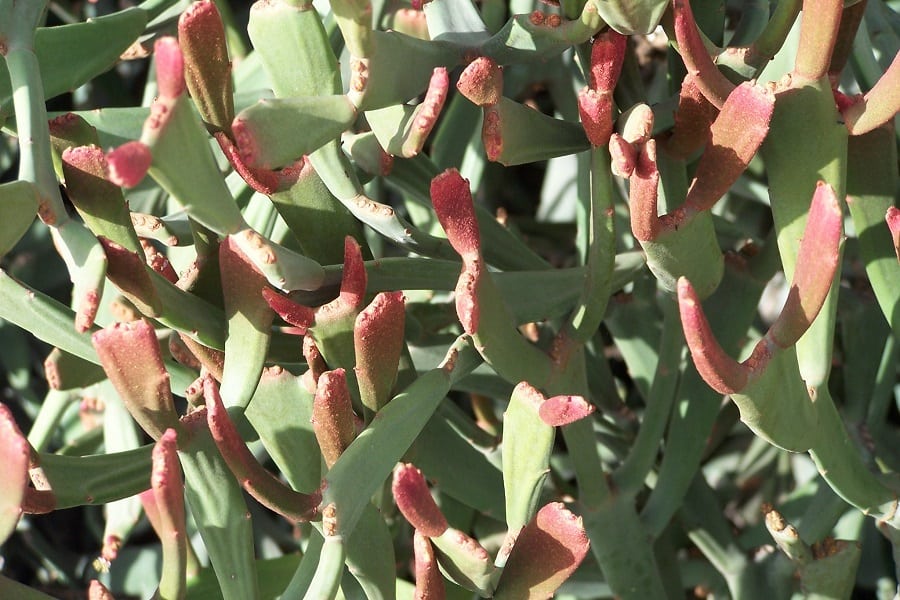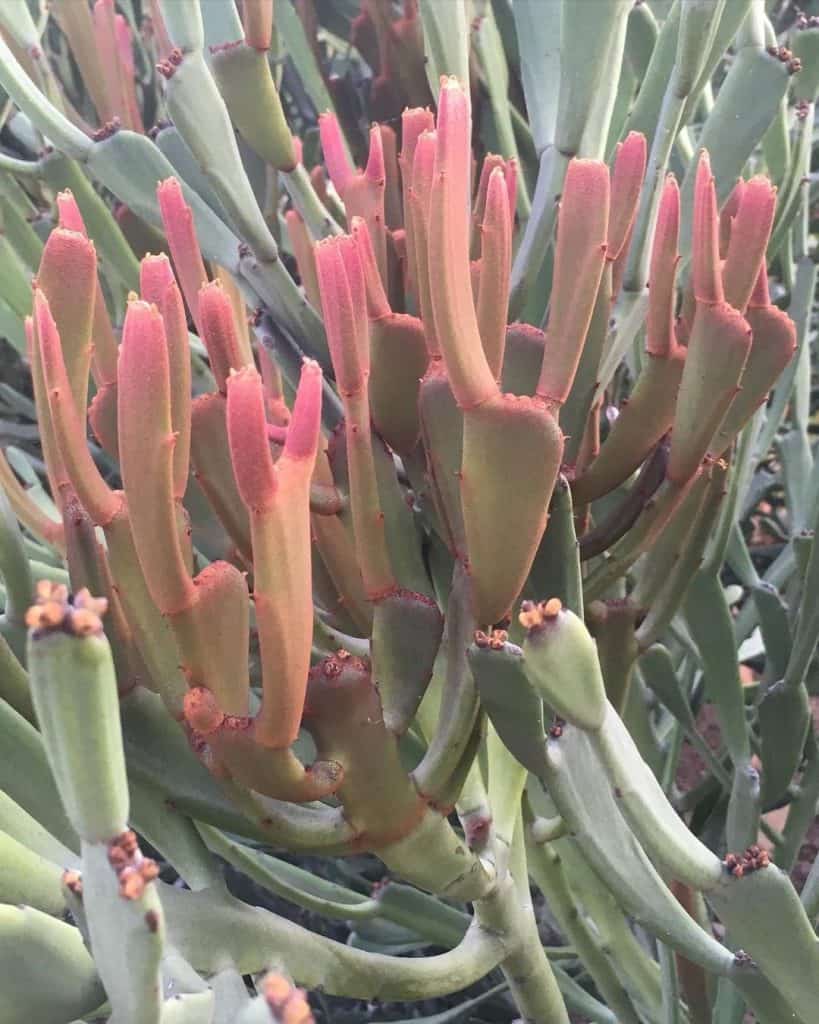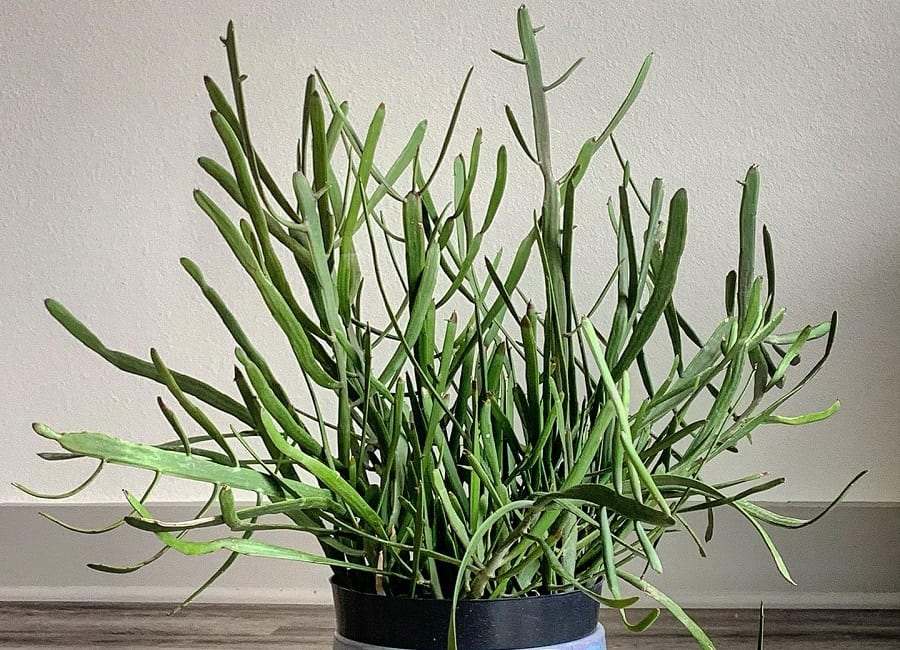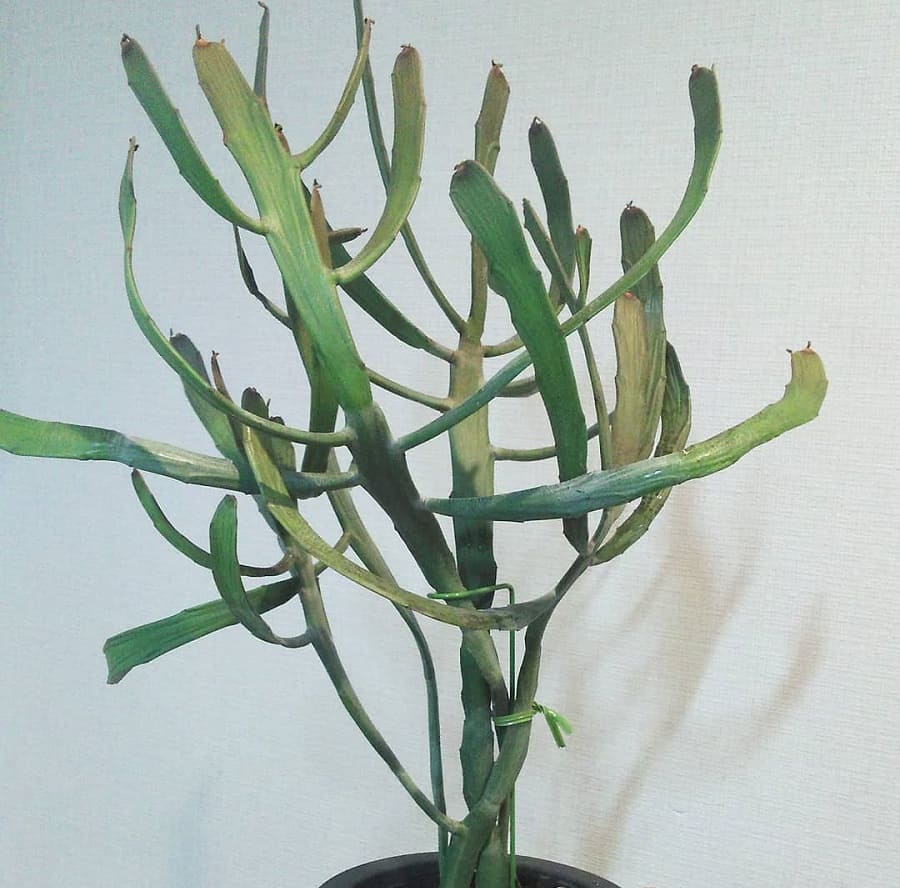Euphorbia xylophylloides: Characteristics and Care
Have you ever come across a plant that made you do a double take? Well, get ready to meet the ultimate botanical trickster – Euphorbia xylophylloides! This quirky shrub will have you questioning everything you thought you knew about cacti. With its cactus-like appearance, it’s like a master of disguise in the plant world. But don’t be fooled by its prickly persona – this leafless wonder is actually a member of the Euphorbiaceae family. Talk about an identity crisis!

Contents
About Euphorbia xylophylloides
Straight from the rocky, semi-arid landscapes of Madagascar comes the ultimate botanical chameleon – Euphorbia xylophylloides! This cactoid euphorbia (plant lingo for “looks like a cactus, but surprise, it’s not!”) starts off growing upright but as it matures, it sprawls laterally, forming a massive, irregularly branching shrub or even a tree-like structure. And we’re not talking small fry here – this plant can reach staggering heights of up to 66 feet with a broad, woody base and crown!
But the real showstopper? Instead of traditional leaves, Euphorbia xylophylloides flaunts fleshy, flat, ribbon-like shoots that bear an uncanny resemblance to the beloved Christmas Cactus. These yellowish-green, slightly waxy “platyclades” (fancy plant term for flat stems) grow up to 2 feet long and are edged with the slightest hint of teeth, almost as if they’re trying to keep up their prickly cactus disguise.
As if that wasn’t enough razzle-dazzle, this plant also produces tiny, ephemeral leaves on new growth that quickly fall off, leaving the platyclades to steal the show. And let’s not forget the hairy, unisexual yellow flowers clustered at the branch tips – while inconspicuous, they add a touch of whimsy to this botanical oddity.
Related Post:
200 Types of Euphorbia With Pictures

Euphorbia xylophylloides Care Guide
Now that you know what a plant rock star Euphorbia xylophylloides is, let’s dive into how to keep this cactus impersonator thriving:
Light
This sun-worshipper craves at least 6 hours of direct rays daily. Indoors, a sunny south-facing window or a high-quality grow light will keep it basking in artificial glory.
Water
During its active growing season from spring to fall, keep the top 2 inches of soil moist but never soggy – usually about once a week. Come winter, it enters dormancy, so cut back on watering and only give it a sip when it starts to look thirsty (around once a month).
Soil
Like most succulents, Euphorbia xylophylloides prefers a well-draining soil mix. A commercial succulent blend or a concoction of potting soil, sand, and perlite will keep its roots happy and prevent any waterlogging woes.
Fertilizer
A little nutrient boost goes a long way for this plant. During the growing season, treat it to a diluted liquid fertilizer formulated for cacti/succulents or a sprinkle of organic compost. But easy on the feast – too many nutrients can lead to an overdose.

Temperature and Humidity
Warm and dry is the name of the game here. Daytime temps of 70-80°F and nights around 55-65°F will have it feeling right at home. As for humidity, it’s adaptable – it can roll with dry indoor air or more humid outdoor conditions.
Pests and Problems
Keep a watchful eye out for spider mites and mealybugs trying to hitch a ride. These pests are criminals in the plant world, so act fast if you spot any unwanted visitors to nip an infestation in the bud.
Pruning
Low-maintenance is this plant’s middle name when it comes to pruning. Simply snip off any dead or damaged stems as needed to keep it looking its best.
Potting and Repotting
If you’re growing your prickly pal in a container, choose one with ample drainage holes to prevent waterlogged roots. Terra cotta and unglazed ceramic are great options that allow the soil to breathe. As for size, opt for a pot just an inch or two wider than the plant’s base to avoid excess soil staying wet.
Repot every 2-3 years in early spring, moving to a container just a size up to give those roots room to spread out. Handle the plant gently during repotting to avoid damaging the branches. Top off with fresh, well-draining succulent soil, and you’re all set!

Euphorbia xylophylloides Propagation Guide
Ready to multiply your Euphorbia army? This plant gives you two routes for propagation – seeds or stem cuttings.
If you opt for seeds, buckle up for a patience-testing adventure. Mix some commercial seed-starting mix with an equal amount of coarse sand to create a well-draining medium. Sow the seeds, keep them nice and warm, and…wait. With a bit of luck (and maybe some encouraging pep talks), you could see new growth sprout in a few weeks. But more realistically, expect it to take anywhere from 2-6 months before those stubborn seeds decide to wake up.
The easier path? Stem cuttings! Here’s how to embark on this botanical cloning journey:
- Using a clean, sharp knife, snip off a stem cutting close to a branching point. Aim for a 5-22 cm (2-9 inch) length.
- Allow the cut end to callus over for a few days until it forms a thin protective layer. This helps prevent rot.
- Once calloused, plant the cutting in a well-draining potting mix suitable for cacti/succulents.
- Water sparingly at first, just enough to settle the soil. Then wait patiently, watering minimally, until you spot new root growth.
- Once rooted, treat your new plant baby like an adult – slowly increase water and transition to a regular care routine.
With a little TLC (and maybe some good luck charms), you’ll have doubled your Euphorbia xylophylloides population in no time! Propagation is a fun, rewarding process that lets you share the quirky cactus love.
